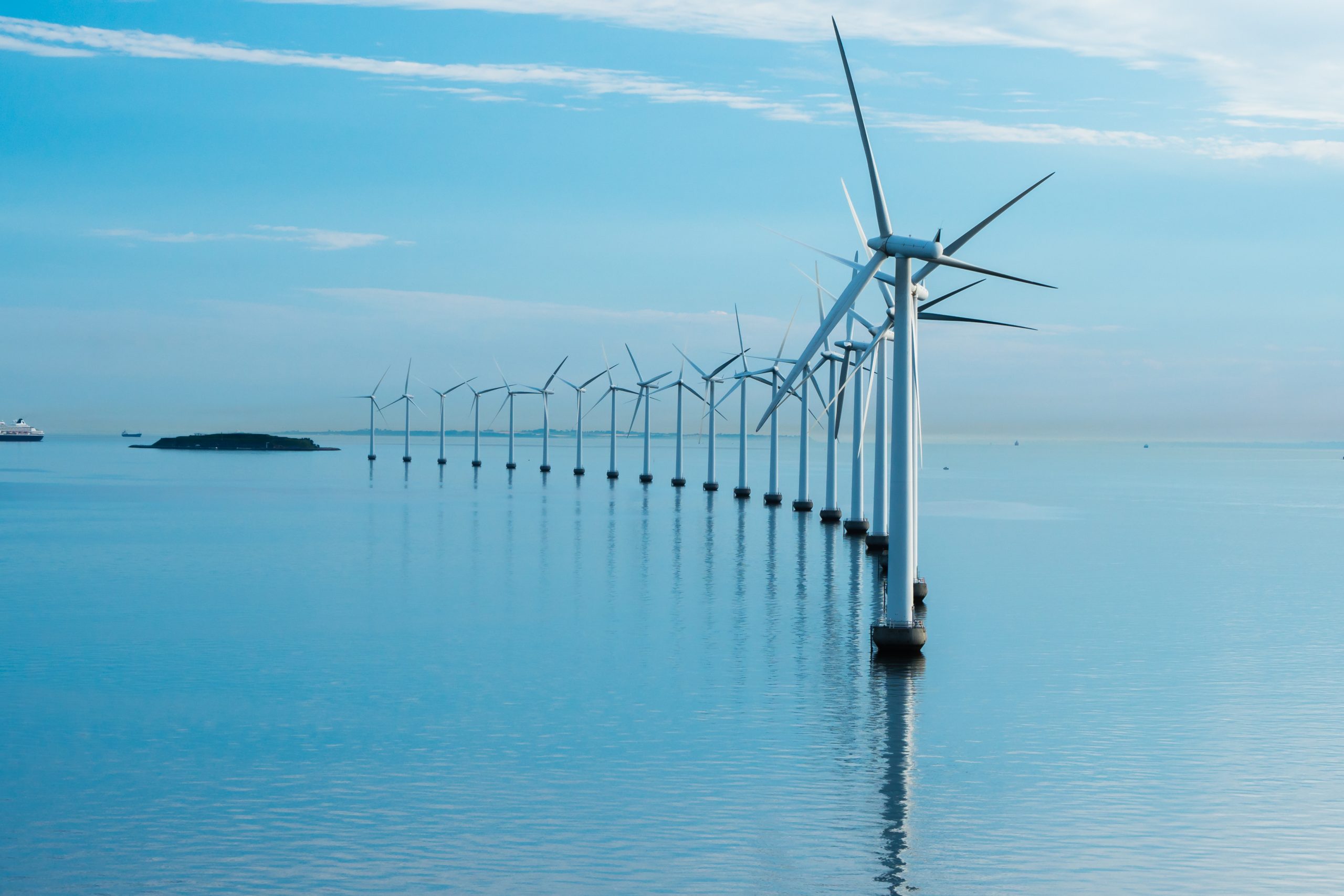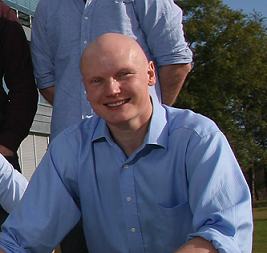
Along with partners in the Galway Hydrogen Hub (GH2) consortium, Dr Rory Monaghan recently announced details of Ireland’s first Hydrogen Valley. “My work at NUI Galway normally consists of teaching, serving as Director of the Energy Systems Engineering programme and running my research team, the Energy Systems Integration Group (Erin),” says Monaghan. “The Galway Hydrogen Hub (GH2) is different to any other project I’ve worked on before.”
The 16 researchers in the Erin team focus mainly on understanding how renewable and sustainable energy technologies can best help to decarbonise the toughest emissions sectors, such as heavy-duty transport, shipping, aviation, heavy industry and long-term energy storage. Where did GH2 come from? “The idea was born on a napkin, over a cup of coffee on the sidelines of a meeting about another green hydrogen project,” he explains. “John O’Sullivan from SSE Renewables and I scribbled down some numbers for how many buses worth of energy went to waste when local wind farms were ‘curtailed’ or disconnected from the electricity grid at low-demand levels. We were blown away by the missed opportunity.” Through later research connections with CIÉ, Galway Port, Aer Arann Islands, Aran Islands Ferries and Lasta Mara, the seeds of the project were sown.
Beginnings
Dr Monaghan’s career stems from a childhood obsession with airplanes, Lego and treehouses. “I had ambitions to be a pilot, but as I got older, I realised I was more interested in the technology of airplanes than actually flying them.” A course ran by Professor Conchúr Ó Brádaigh at NUI Galway later led him towards renewables. “Two contributors to that course, a climate scientist and a wind turbine designer, really caught my imagination. From that moment, I was hooked on sustainable energy.”
Now an expert in the field, Monaghan and his team use their engineering modelling expertise to “imagine and optimise future scenarios for wider hydrogen deployment in Galway.” The consortium turns to the team for objective knowledge on hydrogen, a relatively new technology for Ireland. “We answer questions like ‘where should we produce hydrogen, how much should we store and where, who will our end users be and how can we deliver hydrogen to them at scale?’.”
A new opportunity for Ireland
So, why hydrogen? “Hydrogen represents an enormous opportunity for Ireland,” says Monaghan. “Not only can we use it to store our abundant wind and ocean energy, cleaning up our own carbon-intensive sectors; we can also export it to help others do the same.” According to Monaghan, Ireland’s offshore renewable electricity resource is at least five times greater than its demand. “With green hydrogen, we can indirectly use that electricity to power our trucks, buses, factories, data centres, planes and ships.”
Ireland is finally partaking in the move towards hydrogen, following our neighbours in Europe. “Germany has committed to totally decarbonising its world-leading heavy manufacturing sector, and hydrogen will play a key role in this. German policy makers realise that only one-tenth of this demand will be met by indigenous production and have started striking green hydrogen supply deals with Australia, Chile and Saudi Arabia. There is surely a role for our country – home to Europe’s greatest wind resource – to help meet this demand,” says Monaghan. “The sooner Ireland moves to develop these technologies at home, the higher up the hydrogen value chain we will be.”
The aim of GH2 is to replace fossil fuels with hydrogen in a range of modes of transport in Galway City and County – trucks, buses, and eventually, ships and airplanes. “This is achieved through electrolysis, in which electricity splits water into hydrogen and oxygen.” Hydrogen has often been dismissed as an energy-intensive product, but Monaghan assures that renewable electricity is used to create the hydrogen for GH2. “Since GH2’s electricity will be renewable,” he says. “So will the hydrogen. This is what is commonly called ‘green hydrogen’.”
How is hydrogen produced?
Monaghan compares green hydrogen to a ‘chemical battery’ for renewable electricity. “Ireland is a world leader in generating electricity by wind,” he says. “Our efforts to decarbonise energy currently have four key strands: (1) encourage and incentivise behavioural change towards less energy-intensive practices (think higher carbon taxes, more cycle lanes, better bus services), (2) reduce demand for energy through efficiency measures (think deep retrofits), (3) electrify as much of the economy as possible (think electric vehicles and heat pumps) and (4) increase the amount of renewable electricity supply from wind, solar and other sources.”
With world-class wind and ocean energy resources, Ireland is succeeding in decarbonising electricity. “Decarbonising the direct use of fossil fuels in heating, transport and industry, which together make up 80% of Ireland’s energy use has proven much harder,” says Monaghan. Green hydrogen offers various benefits. Firstly, it contains much more stored energy for the same weight of batteries. “This is crucial for heavier vehicles travelling long distances like buses, ships and airplanes. Hydrogen vehicles are also fuelled much faster than electric vehicles are charged,” he says. Secondly, hydrogen allows for “higher temperatures demanded by industrial processes.” And lastly, the technology offers large-scale, long-term energy storage and transmission. “As Ireland moves from a system where electricity comprises 20% of energy end-use (40% of which is renewable) – to one in 2030 where electricity comprises 50% (80% of which is renewable) – the need to store renewable resources is clear. Green hydrogen provides a long-term solution.”
Monaghan is particularly fascinated by recent improvements in electrolysis, including the direct use of sunlight to split water. “This is being studied by Dr Pau Farras in Chemistry at NUI Galway. An Irish company, dCarbonX, is also developing new technology for storing hydrogen underground for perfect geology.” When it comes to hydrogen uses, he foresees radical changes in aviation and shipping. “Will planes and ships burn hydrogen in engines or turbines? Will they use fuel cells to reverse the electrolysis process and power electric motors? Or will they combine hydrogen with sustainable carbon dioxide, producing “electrofuel” chemically identical to the fossil fuel it replaced?” “It’s a great time to be an engineer or scientist,” he says. “There are innovations in every direction.”
Challenges Ahead
Reflecting on GH2, Monaghan says that the project has been both “challenging” and “immensely rewarding”. The core challenge being the absence of an Irish government position on hydrogen. “It’s difficult to convince big companies to invest time and money into the project, when it is not clear how or if, hydrogen fits in the government’s energy and climate plans,” he says. “Most European countries have clearly defined visions for the role of hydrogen in their transition to net zero carbon economies by 2050 – encapsulated in national hydrogen strategies that recognise cross-sectoral synergies and challenges.” So far, Ireland has been an outlier but Monaghan expects this to change soon. “A draft our own national strategies has just been released by the Department for the Environment, Climate and Communications for public consultation.”
The Russian invasion of Ukraine has undoubtedly added urgency to such plans. “Since the invasion in February, energy security, which is frequently forgotten in everyday political discourse, even regarding climate action, has moved to the very top of the agenda. The European Union recently launched the REPowerEU plan to massively reduce the EU’s dependency on Russian oil and gas by increasing renewable energy deployment. And the EU’s 2030 targets for green hydrogen production have been doubled.”

These developments have kept the GH2 team busy, and Monaghan has made the project a priority in his work. “Having a positive impact on society really needs to be at the core of everything we do at NUI Galway,” he says. “I am extremely lucky to be surrounded by staff and students who share the same belief.” Looking forward, he hopes that GH2 will pave the way for pollution-free transport. “What really excites me about the project is the possibility of one day seeing vehicles driving on the streets of Galway, emitting no pollution, powered by Galway’s inexhaustible wind resources.”
“Every kilometer travelled would reduce our climate impact and our exposure to the volatile world of international energy prices,” he adds. “We could stimulate the birth of Ireland’s hydrogen sector here in the west. What better way to positively impact society?”
Profiles

Rory Monaghan is the Lecturer of Energy Systems Engineering in Mechanical Engineering at the National University of Ireland Galway (NUI Galway). His research interests include advanced simulation of thermal-fluid systems, including combustion, gasification and thermal performance of buildings in particular. He teaches courses in Mechanical Engineering and the newly-created Energy Systems Engineering Degree and Masters programmes at NUI Galway.
Rory has also worked as a part-time Energy Consultant for the Sustainable Energy Authority of Ireland (SEAI) and Enventix Inc., a Silicon Valley-based clean tech start-up, and as a Contract Researcher in 2002-2003 for NUI Galway and Proxy Biomedical Ltd., an Irish medical device company. He enjoys organising proactive initiatives with students from all backgrounds with interests in energy; serving as Content Director for the 2009 MIT Energy Conference, and Founder-President of the NUI Galway Energy Society and NUI Galway Energy Night in 2010.